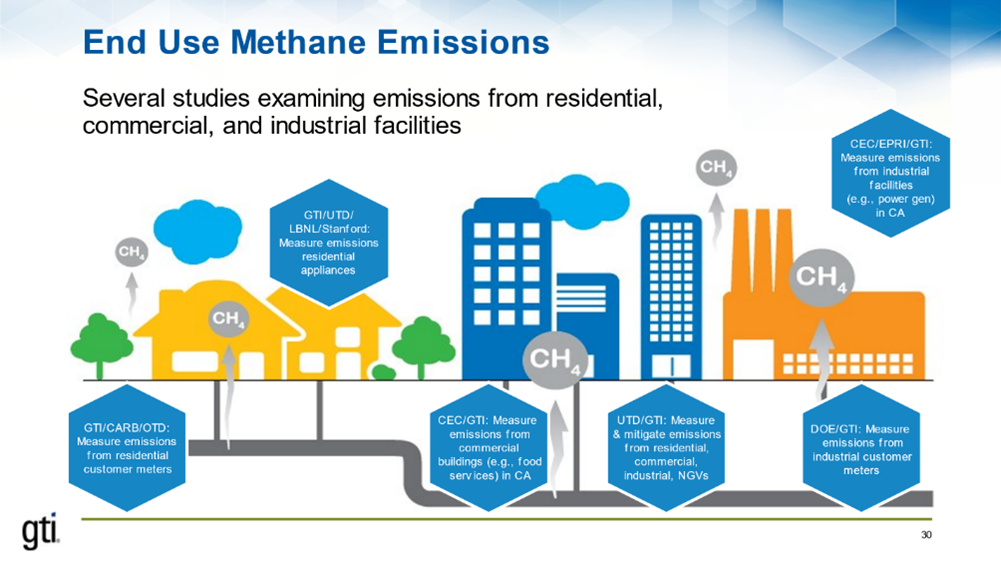Increasing our understanding of methane emissions
GTI Energy has participated in a robust set of studies to increase our understanding of methane emissions from natural gas distribution and end use.
One effort focused on the methods and processes needed to properly develop company-specific emission factors for particular components within their own systems. This has allowed companies to evaluate the ways that regulatory bodies currently calculate emissions for their companies and ensure that the most complete up-to-date and realistic numbers are used in reporting and calculations of emission inventories.
GTI Energy is also actively exploring methane emissions from areas “beyond the meter.” For instance, GTI Energy participated in a project led by the Electric Power Research Institute (EPRI) with funding provided by the California Energy Commission. The study took a multi-tiered measurement approach to explore emissions from two natural gas fired power plants and one industrial facility with a natural gas boiler system. Additionally, it included detailed quantification of methane emissions from compressed natural gas vehicle fueling stations.
The U.S. EPA has also become very interested in how to include a more granular representation of methane emissions “beyond the meter” in the Annual Greenhouse Gas Inventory based on recommendations from the Intergovernmental Panel on Climate Change.
UTD is providing financial support as GTI Energy works to measure and mitigate emissions from residential, commercial, and industrial applications as well as natural gas vehicles, and a GTI Energy effort funded by OTD and CARB measured emissions from residential customer meters.
Learn More
Contact the energy experts today
